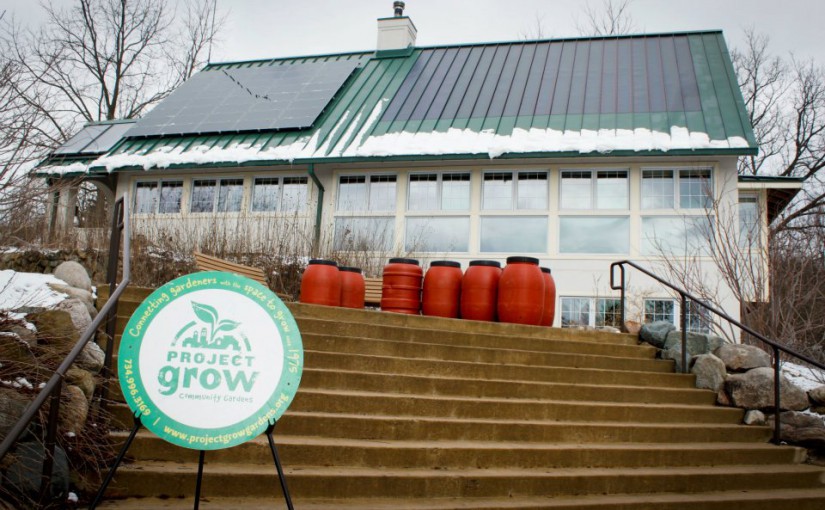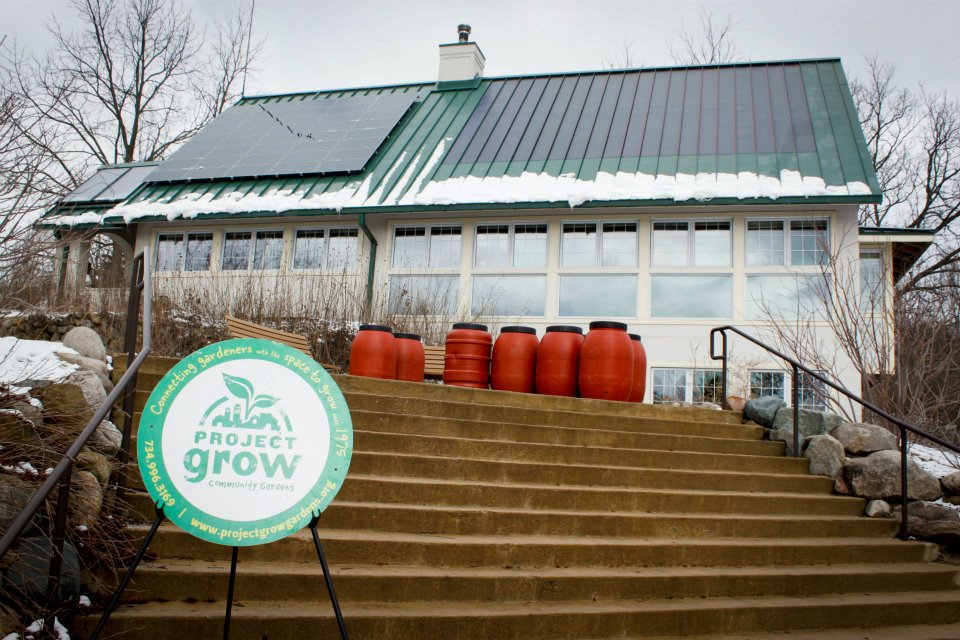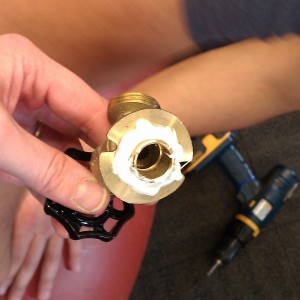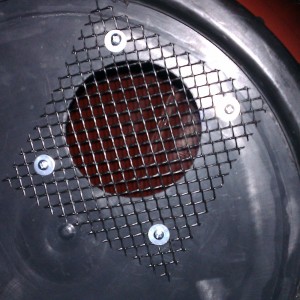
While my wife was eager for someone to get the rain barrel set up immediately, I was formulating a plan.
Then
When we were looking for a house, we had a list of things we wanted. One of the top three items on our list, alongside a fireplace and a finished basement, was a deck. The house we eventually bought, our house, not only had a fireplace and a basement that had enough potential to overlook its unfinished state, it also had a deck. Perfect.
Now
Looking back now, we were merely young and naive. We didn't have a clue what we really wanted, we just guessed a little. It turns out that while we love the fireplace that we don't use often enough and we're excited about finishing the basement sometime in the future, the deck was an impostor, a dictator that divided and overpowered our back garden. When we bought the house, a deck had sounded like a great idea but in reality, it turned out to be a bit rubbish. What we really wanted was a patio. My plan was to put our rain barrel on that patio.
Of course, that meant getting rid of the deck and building a patio. I'll leave the patio building to another post (I'm waiting for the grass to grow to take the last few "after" pictures) but I can tell you that it looks great and we are much happier about the way our back garden is looking (not to mention that the garden is quite pleased to have been liberated). And with the patio in place, someone2, with the fantastic assistance of our neighbour, was able to install the rain barrel.
Installation
The rain barrel is best positioned near a downspout (also known as a drainpipe in some parts) so that water from the roof can be collected. I earmarked a spot on the corner of our patio where the barrel fit perfectly. Next, my neighbour reveled in the opportunity to use his Dremel as he neatly cut the bottom of the downspout. We inserted the spout into the elbow joint that came with the rain barrel and screwed them together. Unfortunately, the elbow wasn't long enough to reliably deliver water to the barrel, so we took a short length of the trimmed downspout and attached that. This extended the spout all the way to the top of the rain barrel.
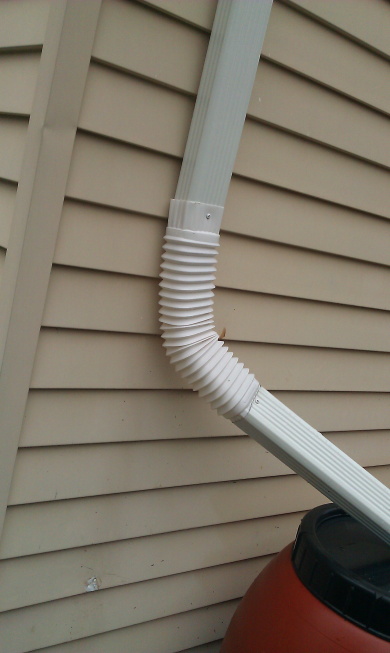
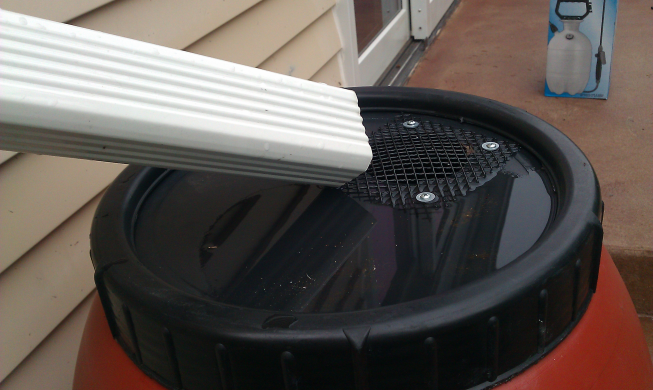
That was that. The rain barrel was ready to be filled. We had no idea when that would happen or how long it would take until a day or two later when it rained for a few hours, filling the rain barrel to overflowing. This was a bit of a problem as we hadn't yet redirected the overflow to something useful, so it just spilled out and washed away the topsoil I had been landscaping around the patio.

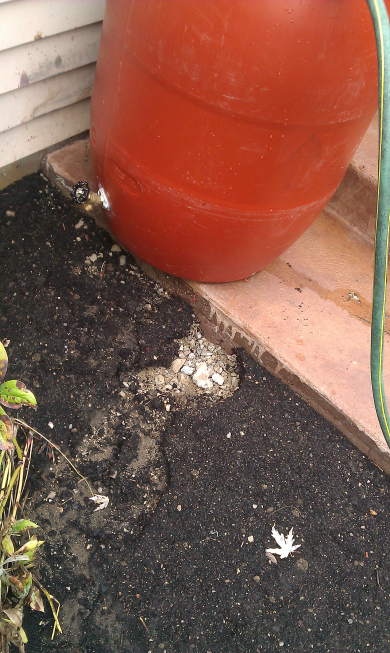
Overflow
Fortunately, we had two spare hoses. We had just bought a new garden hose to replace the two shorter ones that had come with the house. The best of these newly spare hoses was already destined to become the main outlet for the rain barrel, delivering lovely rain water down to the vegetables growing in our garden3. This left the second, leakier hose for me to use on the rain barrel overflow.
I attached the hose to the rain barrel, but where would it go. I didn't think having it draped across the lawn to the vegetable garden was really going to work and having the water just drain away seemed a bit of waste. So, I lay the hose out across the topsoil that was to form the flower bed next to the patio. Once I had reached the end of the bed, I cut the hose to length and discarded the remainder. I then proceeded to bury the hose along the bed, making sure to cut notches in it every few inches so that any overflow could irrigate the surrounding soil.
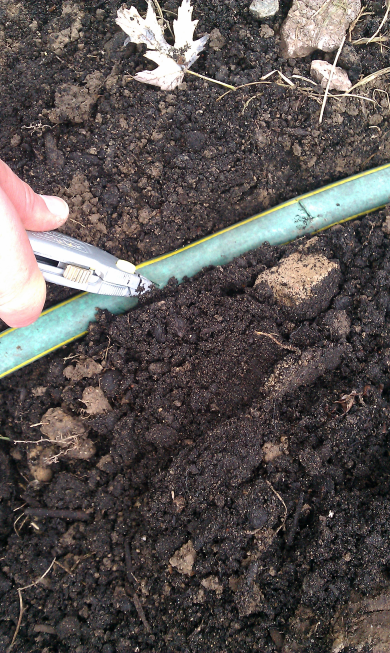
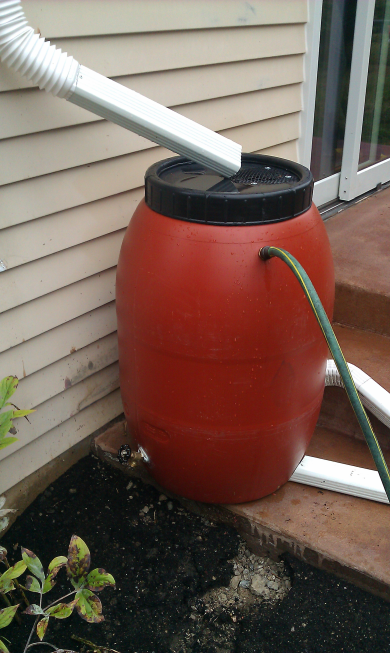
To finish things off, we purchased some white marble chips, rinsed them free of dust and distributed them on the lid of the rain barrel to discourage mosquitoes and other undesirable things from getting inside.
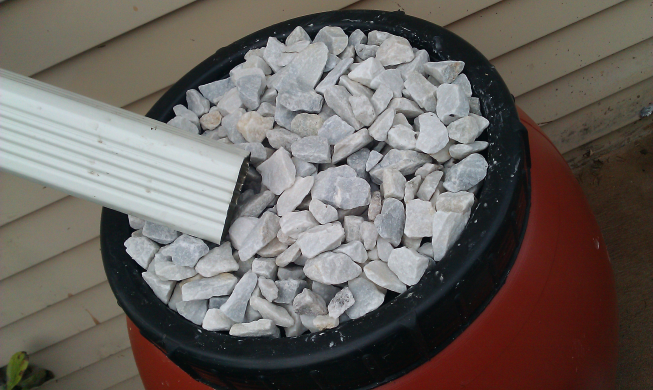
Where can I get one?
I hope the tales of our rain barrel have inspired you to get one (or more) of your own, they really are a great way to get some inexpensive fresh water to your garden. Look for someone in your area who is working to re-purpose food-grade containers just like Maxi Container and MI Rain Barrel are here in southeast Michigan. That way, you're not only going to conserve water but you'll also help to recycle these containers.
If you already have a rain barrel or are thinking of getting one, I'd love to hear about it.

